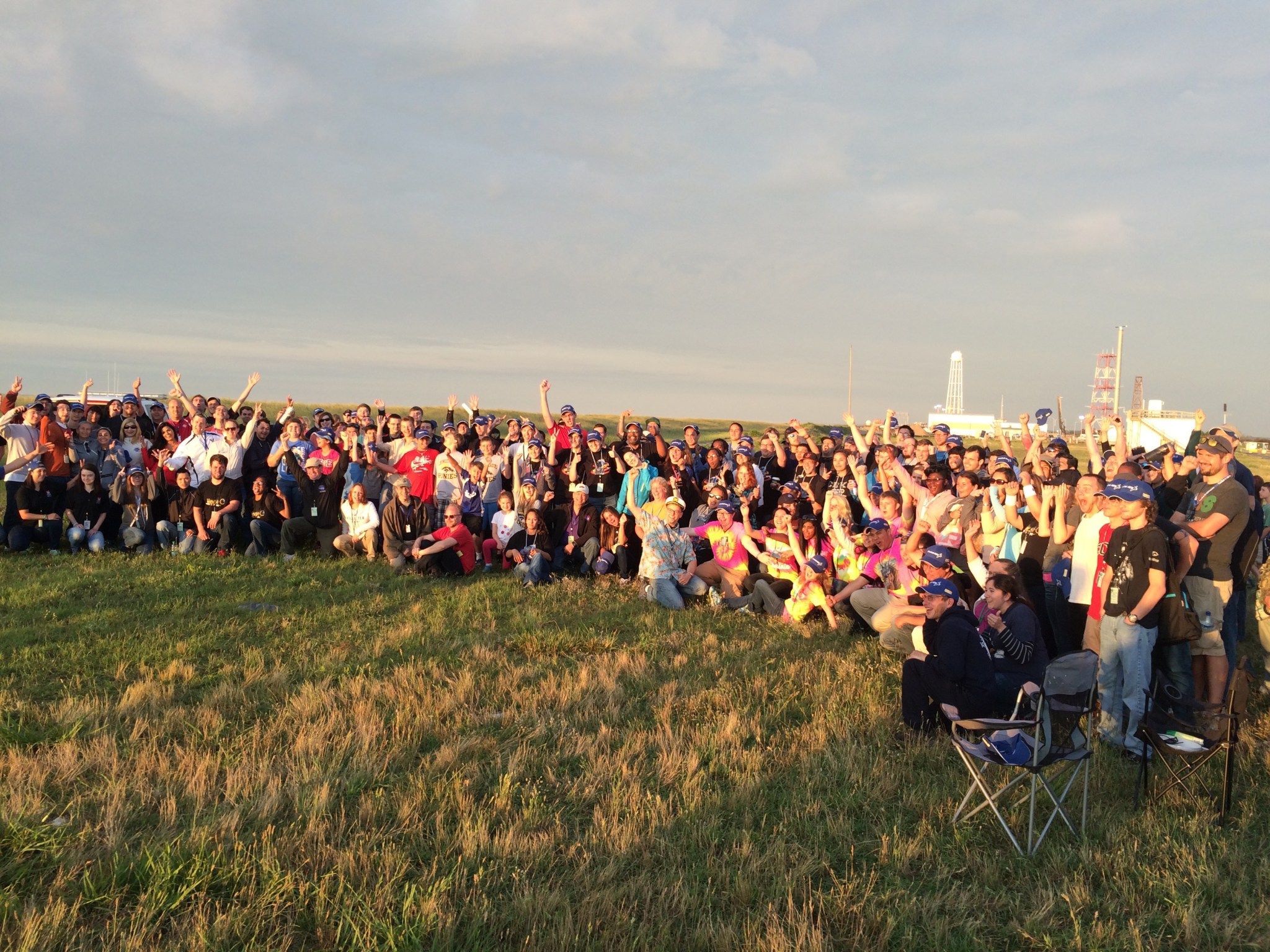UPDATE (June 22): The NASA Terrier-Improved Orion suborbital sounding rocket launch June 23 has been postponed to June 24 because of predicted thunderstorms in the area and high sea state in the recovery area. The launch time is 6 to 10 a.m. The rocket will be carrying the RockOn/RockSat-C education payload. The Visitor Center will open at 5 a.m. on launch day and live coverage of the launch, which can only be seen in the Wallops area, begins at 5:30 a.m. on the Wallops Ustream page.
There’s the adage you have to crawl before you walk.
First you learn the basics and then advance as your skills progress. It’s this approach for any career you learn, rocketry included.
During Rocket Week, held from June 18-24 at NASA’s Wallops Flight Facility in Virginia, nearly 200 university and community college students and instructors from across the country will build and fly experiments on a NASA suborbital rocket through the RockOn! and RockSat-C programs. Another 20 high school educators from the eastern United States will examine how to apply rocketry basics into their curriculum through the Wallops Rocket Academy for Teachers (WRATs).
The week ends with the students launching their experiments on a Terrier-Improved Orion suborbital sounding rocket at 6 a.m. EDT on June 23.
The rocket will carry 22 experiments from the RockOn! program, nine experiments from the RockSat-C program and more than 80 small cubes with experiments developed by middle school students in 49 states as part of the Cubes in Space program, a partnership between idoodlelearning inc. and the Colorado Space Grant Consortium.
After flying to nearly 70 miles altitude, the payload will land via a parachute in the Atlantic Ocean where it will be recovered. The participants are expected to have their experiments in hand later in the day to begin their data analysis.
“The participation in the Rocket Week programs continue to grow, showing the continued interest in NASA and science, technology, engineering and math (STEM) careers,” said Joyce Winterton, Wallops senior advisor for education and leadership development. “Working with the participants, we want to show the importance of STEM majors and the opportunities that are open to them, in particular, those in the aerospace fields.”
Conducted with the Colorado and Virginia Space Grant Consortia, RockOn! is in its ninth year, RockSat-C its eighth and WRATS is in its sixth year.
Chris Koehler, director of the Colorado Grant Consortium, said, “RockOn!/RockSat is a three-tier program that takes students from learning to crawl, through the baby steps and then on to walking in scientific experiment development. They will advance not only their technical skill sets but also those of working with others and becoming team leaders. These are skills that are highly sought by employers.”
In RockOn! the participants receive instruction on the basics required in building and developing a scientific payload for flight on a suborbital rocket. After learning the basics in RockOn, students are may then participate in RockSat-C, where they design and build an experiment for rocket flight during the school year.
WRATS works with high school teachers to show them the basics of rocketry and how to take what they learn into the classroom. The 20 participants from Virginia, Maryland, West Virginia, New Jersey, Pennsylvania and Washington, D.C. will receive instruction on the basics of rocketry including Newton’s Laws, electronic fundamentals, drag and propulsion. This instruction will be applied to hands-on learning activities including building and launching model rockets.
“The RockOn/RockSat program provides hands-on training for students in the critical development of scientific payloads so these students are ready to enter STEM careers in government agencies and commercial fields upon graduation,” said Phil Eberspeaker, chief of the NASA Sounding Rocket Program Office at Wallops. “WRATS helps the teachers show students that STEM is interesting and can be a path to exciting careers. The educators participating have shown a great dedication for working with students. We want to support them with the tools needed to reach their students and guide them to STEM careers.”
The RockOn!, RockSat and WRATS programs are supported by the NASA Sounding Rocket Program. RockOn! also is supported by NASA’s Office of Education and NASA’s National Space Grant College and Fellowship Program in partnership with the Colorado and Virginia Space Grant Consortia.
The launch will be Ustreamed beginning at 5:30 a.m.
The NASA Visitor Center at Wallops will open at 5 a.m. for viewing the launch, which is predicted to only be visible in the Wallops area. If needed, the backup launch day is June 24.
Keith Koehler
Wallops Flight Facility, Wallops Island, Va.
757-825-1579
keith.a.koehler@nasa.gov





























